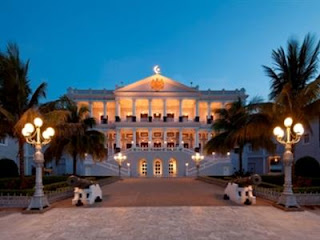folk dances. some these art forms have been inspired by life and in turn have
enriched life.
IIndian
Culture has a lot of variety of dances and these Indian Dances forms had been
structured around nine RASA or we can say nine emotions : Hasya (happiness),
Shoka (sorrow), Krodha (anger), Karuna compassion, Bhibatsa disgust, Adhbhuta wonder
, Bhaya fear, Viram (courage) & Shanta (serenity). These dances are
performed to love and celebrate as well as to offer worship to the God. Indian
Dances can be categorized in 2 parts Classical Dances and Folk Dances.
raised for centuries,
dance in India has evolved in different parts of the area its own distinct
style taking on the culture of that particular region, each acquiring its own
flavour. accordingly a number of major styles of 'art' dance are known to us
today, like Bharatnatyam, Kathakali, Kuchipudi, Kathak, Manipuri, Odissi and
Sattriya. Then, there are territorial variations, the dances of rural and tribesman
areas, which range from simple, joyous celebrations of the hardens, harvest or
birth of a child to dances for the atonement of demons or for invoking spirits.
Today there is also a whole new body of modern observational dance.
one and only of Shiva’s most remembered
dances were performed at Tillandsia now
known as Chidambaram in Tamil Nadu. There lived in the forest of Taragam
ten thousand heretic rishis who
did not believe in the existence of God and propagated that performance of work
alone was ample to attain salvation. With the view to convert them to faith,
Shiva went there disguised as a yogi and accompanied by Vishnu disguised as his
lovely wife, and the gravid Serpent Shesha.
Kathak
is the major classical dance form of northern India. The word kathak means "to tell a
story". It is derived from the dance dramas of ancient India.
When the patronage shifted from the temples to the royal court, there was a
change in the overall emphasis. The emphasis shifted from the telling of
religious stories to one of amusement Today, the story-telling aspect has
been downgraded and the dance is primarily an abstract geographic expedition of
rhythm and movement.
There is actually no such genre as folk
dancing. Rather, there is a large body of unrelated non-classical dance
forms. The only thing common among these dance forms is their rural
origins. Many folk dances are performed by ordinary people rather than master
dancers. It is very usual that on special occasions, the villagers will
gather and sing and dance, accompanying themselves on a variety of folk
instruments. Such special functions include gleaning, planting, marriages
and religious holidays. 


